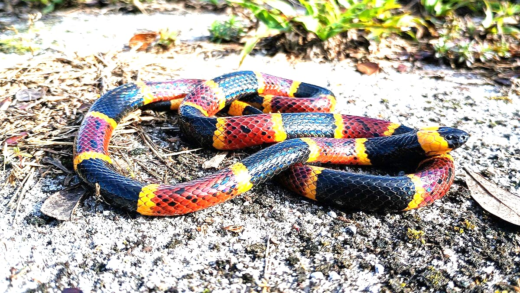Snakes have evolved fascinating adaptations for movement without legs, utilizing methods like serpentine and rectilinear movement. Other legless reptiles include legless lizards and caecilians. Fun facts about snakes reveal their diversity and unique traits, highlighting their evolutionary journey.
Evidence of Legged Snakes: What Do We Know?
The evolution of snakes reveals fascinating insights into their legged ancestors. Evidence of legged snakes comes from fossil records, specifically the discovery of ancient species like Tetrapodophis and Haasiophis. These fossils show distinct limb structures, indicating that snakes once roamed the Earth with legs.
- Tetrapodophis: This 120-million-year-old fossil discovered in Brazil features tiny limbs.
- Haasiophis: Another ancient snake from the Cretaceous period, providing further evidence of legged snakes.
Additionally, modern genetic studies have uncovered remnants of leg-related genes in today’s snakes. This genetic evidence supports the idea that snakes gradually lost their legs through evolution, adapting to a burrowing lifestyle.
When Did Snakes Lose Their Legs?
Snakes began losing their legs around 100 million years ago during the Cretaceous period. This evolutionary change coincided with environmental shifts that favored serpentine movement. As habitats transformed, snakes adapted to a life of burrowing and swimming, which required a streamlined body.
Research indicates that the transition to limblessness happened over millions of years, leading to the diverse snake species we see today. This gradual process allowed snakes to thrive in various environments, further cementing their place in the reptile family tree.
Appearance of Ancient Legged Snakes: What Did They Look Like?
Ancient legged snakes resembled modern snakes but with distinct limbs. They had elongated bodies, similar to today’s serpents, but with small, functional legs. These limbs likely aided in movement and helped navigate through dense vegetation or burrows.
- Body Shape: Long and cylindrical, enhancing flexibility.
- Legs: Small and possibly used for stabilization while moving.
Fossil evidence suggests that these ancient snakes were adept at both terrestrial and aquatic locomotion, allowing them to exploit various ecological niches. Their appearance offers a glimpse into the evolutionary path that led to the modern, legless snakes we recognize today.
The Evolution of Snakes with Legs: How Did It Happen?
The evolution of snakes with legs is a captivating journey through time. Snakes evolved from lizard-like ancestors, and the transition to leglessness occurred gradually. Early reptiles developed adaptations that favored a limbless body for navigating through dense vegetation and burrowing. This adaptation was likely driven by the need to escape predators and hunt for prey more efficiently.
- Genetic Changes: Mutations in specific genes played a role in limb development. Over time, these mutations led to the reduction and eventual loss of limbs.
- Environmental Factors: Changes in habitat, such as the transition from forested areas to more open environments, may have prompted the need for a streamlined body.
Research indicates that these evolutionary changes were not abrupt but occurred over millions of years. Fossil evidence supports this gradual transition, showcasing the diversity of early snakes and their adaptations to different ecological niches.
Modern Snakes with Leg Traces: Are There Any?
Modern snakes exhibit fascinating remnants of their legged ancestry. While no contemporary snake species possess fully developed legs, some display vestigial structures that hint at their evolutionary past. For example, certain species have tiny spurs, which are remnants of hind limbs.
- Boa Constrictors: These snakes have small spurs on either side of their bodies, which are not functional but suggest a legged ancestor.
- Python Species: Similar to boas, pythons also feature these small spurs, further illustrating the evolutionary history of snakes.
These leg traces in modern snakes provide valuable insights into the evolutionary process. They serve as a reminder of how species adapt over time, shedding unnecessary features while retaining clues about their ancestral lineage.
Implications of Legged Snakes on Evolution: What Can We Learn?
The existence of legged snakes has profound implications for our understanding of evolution. Studying these ancient creatures sheds light on the mechanisms of evolutionary change and adaptation. The gradual loss of limbs illustrates how species can thrive in new environments by modifying their physical characteristics.
- Adaptation Strategies: The transition to a limbless form demonstrates the flexibility of life in responding to environmental pressures.
- Evolutionary Biology Insights: Understanding legged snakes helps scientists trace the evolutionary tree of reptiles, revealing connections between different species.
Ultimately, legged snakes remind us that evolution is not a straightforward path. Instead, it’s a complex web of adaptations and transformations, highlighting the resilience and diversity of life on Earth.
How Do Snakes Move Without Legs Today?
The evolution of snakes has led to fascinating adaptations for movement without legs. Modern snakes utilize several techniques to navigate their environments effectively. The primary methods include:
- Serpentine Movement: This is the most common form of locomotion where the snake moves in an S-shape, pushing against surfaces to propel itself forward.
- Rectilinear Movement: Larger snakes, like pythons, often move in a straight line by contracting their muscles and using their belly scales to grip the ground.
- Concertina Movement: This method involves coiling and stretching, allowing the snake to climb or maneuver through tight spaces.
- Sidewinding: Desert-dwelling species, like the sidewinder rattlesnake, use this technique to move across sandy terrain, minimizing contact with the ground.
These movements allow snakes to thrive in various habitats, from dense forests to open deserts. The absence of legs does not hinder their mobility; instead, it enhances their ability to adapt and survive in different ecological niches.
Reptiles Evolved Without Legs: What Other Examples Exist?
While snakes are the most notable legless reptiles, several other species have also evolved without limbs. Examples include:
- Legless Lizards: Species like the slow worm and glass lizard resemble snakes but are actually lizards that have lost their limbs.
- Certain Types of Caecilians: These legless amphibians resemble snakes and burrow underground, showcasing a different evolutionary path.
- Some Marine Animals: Certain species of eels have also lost their limbs over time, adapting to an aquatic lifestyle.
These examples highlight how various reptiles have adapted to their environments by losing their legs, showcasing the diverse evolutionary strategies in the animal kingdom.
Interesting Facts About Snakes and Their Evolutionary Journey: Fun Tidbits!
Snakes are not just fascinating creatures; their evolutionary journey is full of surprises. Here are some fun facts:
- Snake Diversity: There are over 3,000 species of snakes, showcasing a wide range of adaptations and habitats.
- Unique Feeding Mechanism: Snakes can unhinge their jaws to swallow prey much larger than their head, a trait evolved from their ancestors.
- Color and Pattern Variations: Many snakes have developed vibrant colors and patterns as camouflage or warning signals to predators.
- Heat Sensing: Some species, like pit vipers, can detect infrared radiation, allowing them to hunt warm-blooded prey even in the dark.
These tidbits illustrate the incredible adaptability and diversity of snakes, making them a captivating subject in the study of evolution.





Comments are closed.